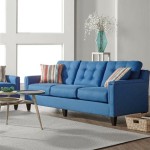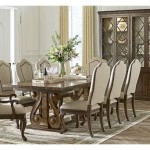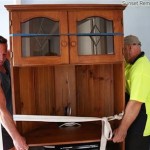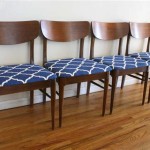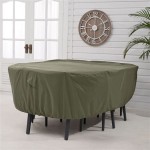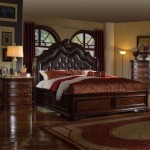Metallic Paint For Wood Furniture: A Guide to Transformative Finishes
Metallic paint offers a unique and stylish way to elevate the appearance of wood furniture. Its shimmering, lustrous finish adds depth, dimension, and a touch of luxury to ordinary pieces. Whether you're aiming for a contemporary, rustic, or vintage vibe, metallic paint can help you achieve the desired aesthetic. This article explores the key considerations when utilizing metallic paint on wood furniture, providing practical tips and insights for achieving a professional finish.
Choosing the Right Metallic Paint
The world of metallic paint offers a wide array of options, from subtle shimmer to bold, glittering finishes. Understanding the different types and their characteristics is crucial for selecting the right paint for your project:
- Metallic Acrylic Paint: This versatile paint type is water-based, making it easy to clean up and offering a durable finish. It comes in a wide range of metallic hues, including silver, gold, copper, and bronze.
- Oil-Based Metallic Paint: This option is known for its rich, deep color and a smoother, more polished finish. It offers excellent durability and is suitable for projects where a longer drying time is not a concern.
- Powder Coat Paint: While less common for furniture, powder coat paint offers unmatched durability and a smooth, glass-like finish. It involves applying a powder coating to the wood surface and then curing it in an oven.
- Spray Paint: Convenience is the hallmark of spray paint, offering a quick and even application. Metallic spray paints come in various finishes, including gloss, satin, and matte.
The choice between these types depends on factors like desired finish, project scale, and personal preference. Consider the level of sheen, durability, and drying time when making your selection.
Preparing Your Wood Furniture
Proper surface preparation is key to achieving a professional and long-lasting finish. Neglecting this vital step can result in uneven paint application and diminished results. Follow these steps to prepare your wood furniture:
- Clean the Surface: Wipe down the furniture with a damp cloth to remove dust, dirt, and any existing finishes. Allow the surface to dry completely before proceeding.
- Sanding: Lightly sand the wood surface with fine-grit sandpaper to smooth out any imperfections, rough spots, or previous coatings. This creates a better adhesion for the paint.
- Repairing: Fill any cracks or gaps with wood filler and allow it to dry completely. Sand the filled areas smooth to ensure an even surface.
- Prime the Surface: Applying a primer before painting is crucial for achieving a smooth and even finish, especially on bare wood or surfaces with stains. Choose a primer that is compatible with your chosen metallic paint type.
If your furniture has existing paint, sanding or using a deglosser is recommended to ensure proper adhesion. A well-prepared surface is the foundation for a successful metallic paint project.
Applying Metallic Paint
With your furniture prepped and your paint selected, it's time to apply the metallic finish. Achieving a professional look requires attention to technique and patience:
- Choose Your Application Method: The application method depends on the type of paint and your preference. For brush application, use a high-quality brush with soft bristles. For rollers, choose a short nap roller for a smoother finish. Spray paint requires a proper respirator and well-ventilated space.
- Thin the Paint: Thinning your metallic paint with a suitable thinner can create a smoother finish, especially for brush and roller applications. Refer to the paint manufacturer's instructions for the appropriate thinning ratio.
- Apply Thin Coats: It's best to apply several thin coats instead of one thick coat. Allow each coat to dry thoroughly before applying the next. This allows the paint to level out and prevents brush strokes or roller marks.
- Maintain a Consistent Direction: Follow a consistent direction when applying each coat to ensure an even finish. This could be vertical, horizontal, or circular strokes, depending on your preference.
If you're working with light-colored wood, consider applying a base coat of a darker color before applying your metallic paint. This helps to enhance the metallic effect and create a more dramatic finish.
Finishing Touches
Once the metallic paint has dried completely, you can add finishing touches to enhance the look and durability of your furniture:
- Sealer: Apply a clear sealant, like polyurethane or varnish, to protect the metallic paint from scratches, stains, and wear and tear. Choose a sealant that complements the finish of your metallic paint.
- Distressing: For a rustic or vintage look, consider distressing the metallic paint with sandpaper. This technique creates a worn and aged appearance, adding character and warmth to your furniture piece.
- Waxing: Waxing is a good option for adding extra shine and protection to your metallic finish. Apply a high-quality wax and buff it to a smooth finish.
Metallic paint offers a unique and exciting way to revitalize and enhance the beauty of wood furniture. By following these tips and tricks, you can achieve a beautiful, durable, and eye-catching finish that will elevate your furniture to a whole new level of style.

How To Paint Furniture With Metallic Lost Found Decor

Metallic Paint On Furniture You Can Apply With A Paintbrush

How To Paint Metallic Furniture The Easy Way Do Dodson Designs

Faux To Fab Metallic Furniture Makeover With Modern Masters Paint

How To Add Broe Metallic Glaze Painted Furniture

Best Paints For A Metallic Finish Painted Furniture Ideas

How To Layer With Metallic Paint Furniture Makeover

What To Know Before Using Metallic Paint Painted Furniture Ideas

Gold Painted Furniture

How To Paint Furniture With The Best Silver Metallic
See Also

